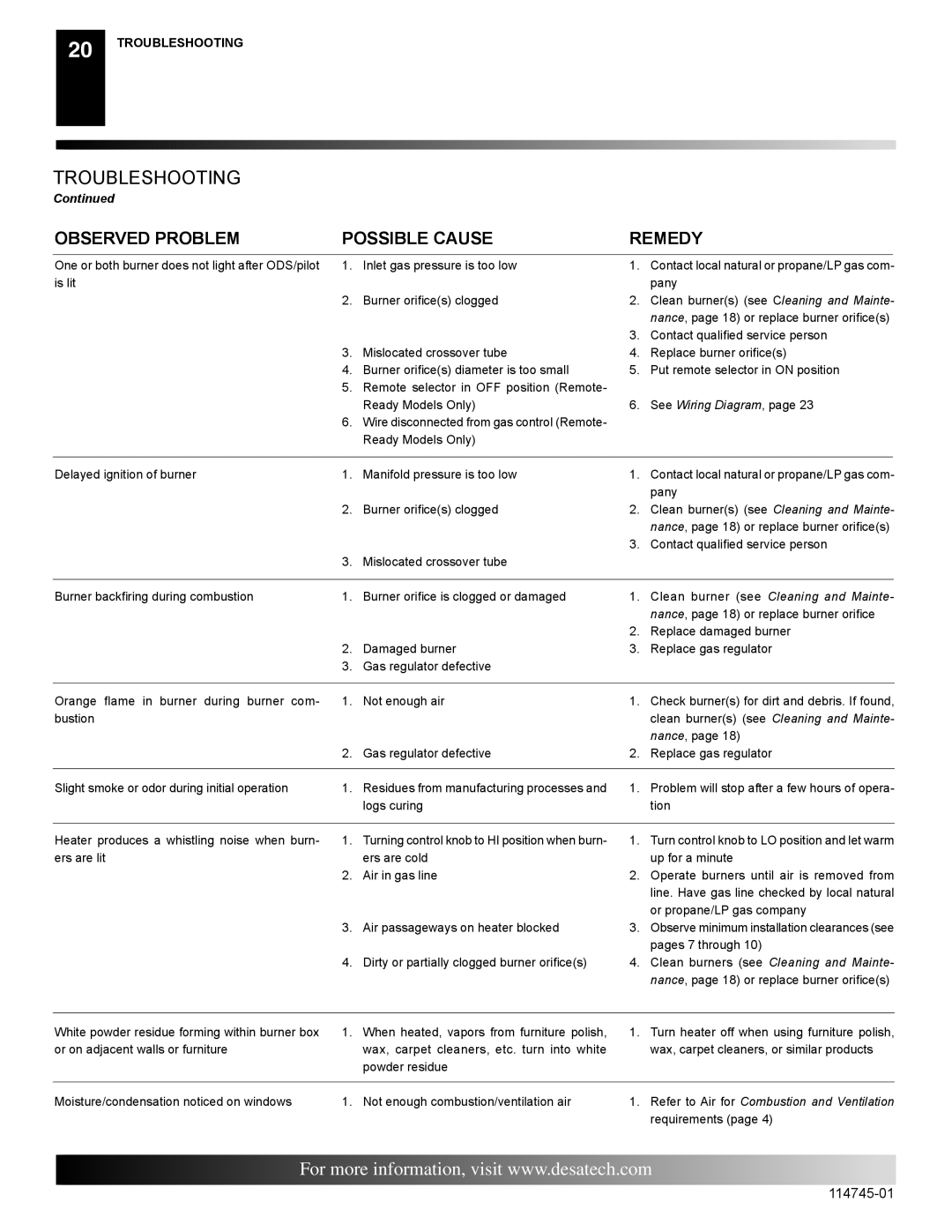VFRMV24NA, VFRMV18NA, VFRMV18PA specifications
The Desa VFRMV18NA, VFRMV18PA, and VFRMV24NA are advanced heating solutions designed to efficiently warm residential spaces while providing enhanced user comfort and convenience. These models are part of the VFRMV series, known for their reliability, innovative technology, and energy efficiency.One of the main features of the VFRMV series is its variable refrigerant flow (VRF) technology. This allows the system to modulate the amount of refrigerant sent to each indoor unit based on the current heating or cooling load, resulting in optimal energy consumption. This flexibility not only saves energy but also ensures that the desired temperature can be quickly achieved and maintained across different rooms.
The VFRMV18NA and VFRMV18PA models are designed for residential use, with the VFRMV18PA specifically including additional features for enhanced performance in various climatic conditions. They come equipped with inverter-driven compressors, which adjust their speed to meet demand, leading to quieter operation and improved efficiency. This inverter technology ensures that energy consumption decreases during periods of lower demand, making these models environmentally friendly and cost-effective.
The VFRMV24NA model, with its higher capacity, is suitable for larger spaces or homes needing additional heating and cooling power. Like its counterparts, it features a high SEER (Seasonal Energy Efficiency Ratio) and HSPF (Heating Seasonal Performance Factor) ratings, indicating its efficiency in energy use, which translates into savings on energy bills for homeowners.
In terms of characteristics, all three models incorporate user-friendly controls, allowing homeowners to easily adjust settings and schedule operations. Smart technology integration enables remote monitoring and control via mobile apps, giving users the ability to manage their indoor climate on the go.
Additionally, the VFRMV series features advanced filtration systems that improve indoor air quality by capturing dust and allergens, making these models an excellent choice for households with allergy sufferers. The units are also designed with sleek, modern aesthetics, ensuring they blend seamlessly with a variety of interior designs.
In summary, the Desa VFRMV18NA, VFRMV18PA, and VFRMV24NA offer cutting-edge technology, impressive efficiency, and user-friendly features. With their VRF technology, inverter-driven compressors, and smart controls, these heating solutions provide an ideal choice for homeowners seeking comfort, efficiency, and convenience in their indoor environments.

